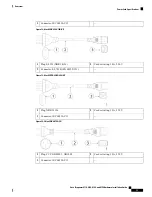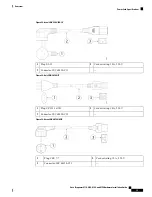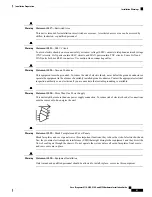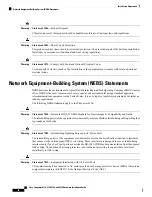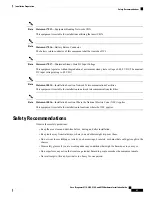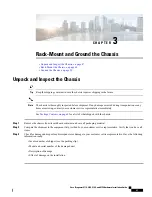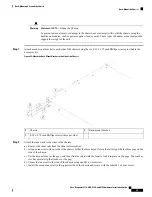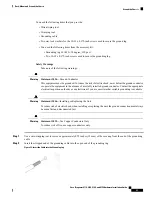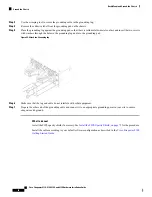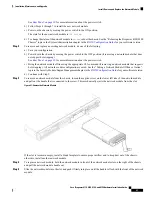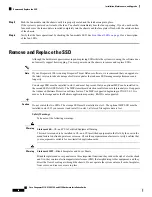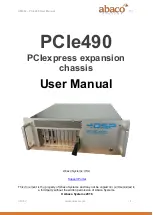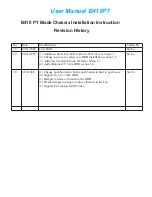
Site Environment
When planning the site layout and equipment locations, consider the information in the next section to help
avoid equipment failures and reduce the possibility of environmentally caused shutdowns. If you are currently
experiencing shutdowns or unusually high error rates with your existing equipment, these considerations may
help you isolate the cause of failures and prevent future problems.
Power Supply Considerations
See
Power Supply Modules, on page 21
for more detailed information about the power supply modules in
the security appliance.
When installing the chassis, consider the following:
• Check the power at the site before installing the chassis to ensure that it is “clean” (free of spikes and
noise). Install a power conditioner, if necessary, to ensure proper voltages and power levels in the appliance
input voltage.
• Install proper grounding for the site to avoid damage from lightning and power surges.
• The chassis does not have a user-selectable operating range. Refer to the label on the chassis for the
correct appliance input-power requirement.
• Install an uninterruptible power source for your site, if possible.
• If you are using dual redundant (1+1) power supplies, we recommend that you use independent electrical
circuits for each power supply.
Rack Configuration Considerations
See
Rack-Mount the Chassis, on page 48
for the procedure for rack-mounting the chassis.
Consider the following when planning a rack configuration:
• Standard 19-in. (48.3 cm) 4-post EIA rack with mounting rails that conform to English universal hole
spacing according to section 1 of ANSI/EIA-310-D-1992.
• The rack-mounting posts need to be 2 to 3.5 mm thick to work with the slide rail rack mounting.
• If you are mounting a chassis in an open rack, make sure that the rack frame does not block the intake
or exhaust ports.
• If your rack includes closing front and rear doors, the doors must have 65 percent open perforated area
evenly distributed from top to bottom to permit adequate airflow.
• Be sure enclosed racks have adequate ventilation. Make sure that the rack is not overly congested as each
chassis generates heat. An enclosed rack should have louvered sides and a fan to provide cooling air.
• In an enclosed rack with a ventilation fan in the top, heat generated by equipment near the bottom of the
rack can be drawn upward and into the intake ports of the equipment above it in the rack. Ensure that
you provide adequate ventilation for equipment at the bottom of the rack.
Cisco Firepower 4110, 4120, 4140, and 4150 Hardware Installation Guide
45
Installation Preparation
Site Environment



